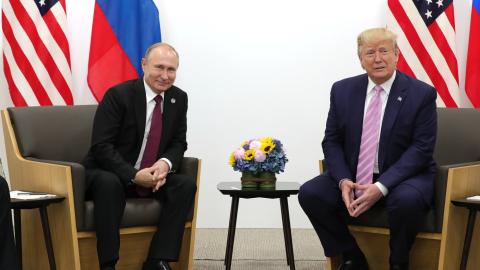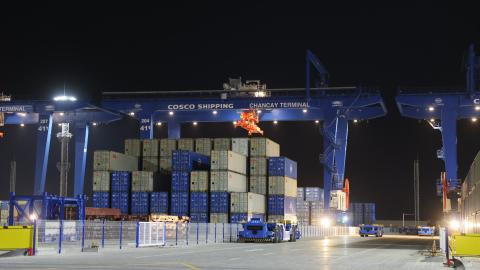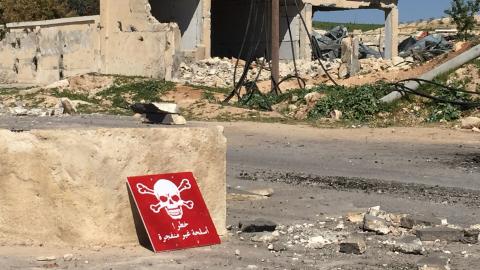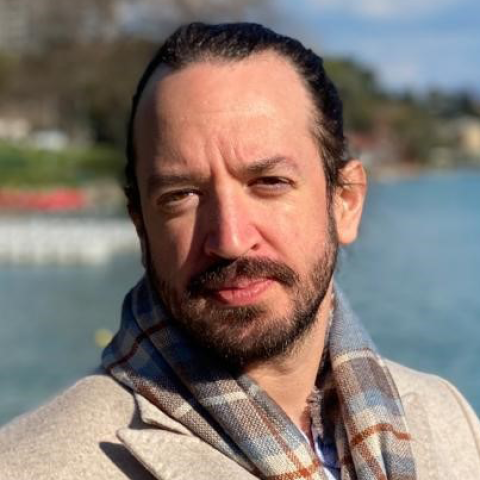In the foreign policy of the Central Asian states--Kazakhstan, Kyrgyzstan, Uzbekistan, Tajikistan, and Turkmenistan--the attraction to the rest of the Muslim world has had a relatively short history. The political independence of these countries following the break-up of the Soviet Union was accompanied by their populations’ growing interest in their Muslim identity as well as an initial openness to the Muslim world’s great powers such as Pakistan, Egypt, and Saudi Arabia. However, since the mid-1990s, fear of political Islam has helped to curb these emerging relations, which have also proved disappointing in economic terms. The denunciation of the Sunni “Wahhabi threat” has become one of the leitmotifs of Central Asian states, which are adamant about retaining their secular character. They also advocate a more traditional Islam that is steeped in Sufi mysticism and depoliticized.
Since the mid-2000s, Muslim states such as the United Arab Emirates and Malaysia have gained greater visibility on the Central Asian economic scene, though their impact on the political and cultural life of the region has been minimal. It is quite another case for the Islamic Republic of Iran, whose push into Central Asia was strong in the early years following the demise of the Soviet Union, and is a presence in the region two decades later. Despite this, the religious and political influence of Iran in Central Asia has often been overestimated, and concerns related to the expansion of political Islam inspired by the Shiite Iranian model have by and large been exaggerated. Tehran, for instance, has not tried to play the card of religious one-upmanship in Central Asia as it has done in Lebanon, Syria, and Palestine, nor has it sought to mobilize the small minority of Shiites in the region.
Iran has, however, pursued a flexible policy in Central Asia that has created for it a range of opportunities for dramatically expanding its influence in the future. The Islamic Republic’s intelligence services are very active throughout the region; the Revolutionary Guard has at its disposal networks of influence in the region; Iranian universities host Central Asian students every year; small Sunni religious groups receive funding from Tehran; and new Shiite movements with connections to Iran have formed in Tajikistan. Moreover, the current strengthening of Sunni Salafism in the post-Soviet world has pushed Tehran to likewise seek to increase its position in Central Asia--not so much for the purposes of propagating Shiite ideology (though this has been a consequence), but in order to maintain an ability to balance the ambitions of Sunni Middle Eastern powers and to promote its own state interests.
Revolutionary Ideology or Economic Pragmatism?
For Iran, the collapse of the Soviet Union, which during the Cold War era was the main counterweight to U.S. influence within the Greater Middle East, meant a sudden transformation in its geopolitical environment. Not long after the Soviet collapse, Iranian officials began expressing concern about the rapid progress of Turkey in Central Asia. Ankara, after all, was seen as close ally of the United States, and a return of pan-Turkism would endanger Iran’s position in the region. In Soviet times, Iran was widely regarded as a buffer state between Russia on one side, Turkey and Pakistan on the other, but the geopolitical game reversed in the 1990s, when Ankara and Islamabad presented themselves as barriers to the expansion of revolutionary Islamic ideas in Central Asia and the Caucasus.1
Despite centuries of cultural, commercial and political interchange, Central Asia is a region that contemporary Iran has largely ignored. Following Central Asia’s independence, Iranian leaders had no specific ideas about what they might hope to achieve in the region, and they did not consider it to be a priority area. Iran’s primary concerns were domestic: After emerging from a decade of war with Iraq, the Islamic regime’s domestic economic and social situation was tense, and the death of Ayatollah Khomeini in 1989 aroused concerns of political destabilization. In the early 1990s, Iran engaged in a program of reforms designed to lead the country towards a more market-oriented economy. Tehran, among other things, encouraged local governmental bodies to establish relations with neighboring states, and this ultimately allowed the Islamic Republic’s northern provinces to turn to their former Soviet neighbors. As a consequence of this, the new province of Golestan, the main Iranian province with a Sunni majority, and its capital Gorgan, have forged direct relations with Kazakhstan, while the Mazandaran province has deepened its relationship with Turkmenistan.2 It was not until 2001, however, that the Foreign Minister of Iran, Kamal Kharrazi, announced that Central Asia would become a priority of Iranian foreign policy.
For their part, the Central Asian states were trying, through partnership with Tehran, to escape Russian influence, to diversify economically, and to gain access to open seas in the south. Central Asian states were also quite wary about forging a relationship with the Islamic regime. They feared that Tehran would seek to export the Islamic revolution as it had done in Lebanon and Palestine, and that Iran would thereby weaken Soviet successor regimes, which maintain a separation of state and religion. At the time, Central Asian states also faced strong pressure from Washington, which sought to prevent the transformation of Iran into a regional power. In 1992, Kazakhstan was obliged to refuse help offered by Iran for the restoration of the Caspian port of Aktau; instead it chose to work with the Netherlands.3 Islam Karimov’s regime in Uzbekistan, uneasy about Islamist tensions in the Fergana Valley, decided to curb Iranian influence in the early 1990s. Turkmenistan invited the development of economic relations with Iran, but has demonstrated a deep reluctance with regard to its religious presence. The Iranian influence was at first confined to Tajikistan alone, in light of their linguistic and cultural proximity, but the Tajik civil war worried Tehran, which has no interest in destabilizing its neighbor.
3It is likely that Iran funded, at least initially, the Party of Islamic Revival of Tajikistan, and indirectly participated in the overthrow of the government of Rakhmon Nabiev in 1992. Between 1993 and 1998, the Iranian authorities regularly hosted the leaders of the Islamic opposition. However, Tehran has always denied a direct role in the Tajik armed conflict, claiming to have perceived it as a civil war between regional clans, not a holy war on behalf of Islam. Nonetheless, along with Russia, Iran quickly became involved in the negotiation process. In 1995, Emomali Rakhmon and Nuri Said Abdulloh were invited to Tehran to find a peaceful settlement to the conflict.4Furthermore, the policy of revolutionary export was in doubt within the Iranian government itself, with Hashemi Rafsanjani criticizing the preference given to fluid ideological goals at the expense of national interests. From 1997, the export of political Islam was clearly challenged by the rise of the reform-oriented president Mohammad Khatami, who accelerated the removal of Shiite revolutionary ideology from Iran’s foreign policy in an effort to bring the country out of international isolation.5
At the end of the 1990s, Iran tried to strengthen its position in international structures, such as the Organization of Islamic Conference (OIC), but relations with Israel quickly constituted a point of contention between the Central Asian governments and Tehran. The pressures from Iran, which then sought to adopt resolutions against Israel during its 1997-2000 presidency of the OIC, led the Central Asian states to keep their distance from the organization on behalf of their good relations with Tel Aviv. The Kazakh and Uzbek presidents threatened to leave the OIC if Tehran continued to exploit it in its struggle against Israel. Iran also sought a leading role in the Economic Cooperation Organization (ECO), the only major regional organization to which it belongs.6 Again, the Central Asian states rejected Tehran’s attempts at politicization of the organization, which would have put them at odds with the United States; instead they demanded that the role of the ECO be limited to development assistance and regional transport. The organization has certainly failed to take off and today plays only a marginal role in the development of exchanges between Iran and Central Asia.7
In the context of Iran’s relations with the five Central Asian states, several contentious issues remain unresolved. The main one concerns the legal status of the Caspian Sea, as Iran is now the latest actor to refuse to adopt the majority opinion of the median line. If it were to do so, it would see its share of the Caspian Sea drop from 20 to 13 percent.8 Nor is Tehran’s place in regional geopolitical reconfigurations settled. The Iranian regime hopes to break its international isolation by focusing on the Asian side of the country and joining the Shanghai Cooperation Organization (SCO). It obtained observer status in 2005, but its hopes of becoming a full member are reduced, as the Central Asian governments, Moscow, and Beijing are unfavorable to it.
Finally, the Iranian nuclear issue is not without problems for the Central Asian states. They seek to maintain a middle position on this issue, affirming the inalienable right of Iran to use nuclear technology for peaceful purposes and calling for an exclusively diplomatic settlement to this international problem. A possible U.S. military intervention would threaten the region’s geopolitical balance and jeopardize its stability. The Central Asian governments are worried about pressure from Washington and retaliation from Tehran due to their support for the United States. Kyrgyzstan is in a particularly difficult position, given the presence on its soil of the U.S. military base at Manas, and has already declared that it would refuse any U.S. intervention against Iran launched from its territory.
The partnership between Iran and Central Asia seems destined to grow. Although Iranian products arrived in Central Asian markets in the early 1990s, Iran has proved unable to withstand competition from China and will eventually be forced out. However, new areas of cooperation that value Iranian expertise are developing: primarily oil and hydroelectricity, but also minerals, the industrial processing of agricultural production, and the textile and automotive industries. Iran currently ranks as the eighth trading partner of Turkmenistan, the sixteenth of Kazakhstan, and the seventh of Tajikistan.9 Its geographical location also enhances Iran in the eyes of the Central Asian states, which are in search of access roads leading eventually to southern seas, Europe, and the Mediterranean basin. Projects connecting Central Asian road and rail networks to their Iranian neighbor, then on to Turkey or Afghanistan, are numerous, but for the moment the amount of traffic utilizing them is very small.10 Until now, geography has not won its battle with geopolitics. However, the strategic role Iran plays as a transit zone on the Eurasian continent, as much on the East-West axis as on the North-South one, will work to its benefit over the long term. The reorientation of Iran toward a more Asian identity, along with its growing interest in China, is expected to change the status quo and open up new prospects for Iranian cooperation with Central Asia.
Shiism’s Heterogeneity in Central Asia
The vast majority of the population of Central Asia adheres to the Hanafi school of Sunni Islam. But in addition to the Ismailis, who live in the Tajikistan’s Gorno-Badakhshan autonomous region in the Pamir Mountains, and are followers of Aga Khan,11 the region also has a Twelver Shiite minority. These Shiites are only permitted to practice their faith under relatively difficult, sometimes illegal, conditions. Many factors--internal and external, political and religious--hamper the acknowledgment by Central Asian authorities of the existence of Shia, which is associated with national minorities, equated with Islamism, and therefore with the risk of terrorism or rebellion. Shiism is also seen as an agent of Iranian influence.
The Shiites of Central Asia, which amount to a very small minority, can be divided into two main categories. The first and most statistically significant group includes the Azeri minority, mainly in Turkmenistan, where they comprise about 15 percent of the population,12 and in Kazakhstan. According to the 1999 census, Azeris numbered approximately 78,000 in Kazakhstan and 15,000 in Kyrgyzstan, and according to the 1989 census, there were 44,000 in Uzbekistan and 33,000 in Turkmenistan.13 Despite the relatively large size of this population, Kazakhstan has not officially authorized any Shiite mosques; however, many places of worship operate informally under permanent threat of legal sanction. In Kyrgyzstan, there exists only one Shiite mosque for the Azeri minority, led by an Azeri imam, in Bishkek. It falls under the jurisdiction of the Muslim Spiritual Board of Kyrgyzstan, which does not recognize Shiite institutional autonomy. The attendees of the mosque are mostly Iranian businessmen and diplomats, and members of the Azeri minority.14 In Turkmenistan and Uzbekistan, where authorities are particularly suspicious with regard to religious matters, Shiites find themselves in particularly difficult straits.
Shiism is a major target of religious repression in Turkmenistan. Any cultural reference to Shiism is punishable under the law. In 2004, the Turkmen author R. Esenov was imprisoned for depicting, in his novel Bayram Khan, a 16th century regent of the Mughal Empire as a Shia, and for refusing to bend to the will of the then president Saparmurat Niyazov, who insisted that the agent was Sunni.15 Severely strained relations between Ashgabat and Baku have added to the many difficulties facing Shiites in this state. Azeri religious commemorations following the death of President Heidar Aliyev in 2003 have been forbidden. No Shiite mosques have been permitted to officially register, very few prayer rooms in Sunni mosques are open to Shiites, and these are more or less clandestine. There were only five such establishments in 2008.16 A Shiite mosque in the village of Bagyr, near Ashgabat, was demolished in 2005. The last Shia imam of Turkmenbashi, a Caspian city that is home to a large portion of the Azeri community, was forced to leave the country that same year.17 With its protected diplomatic status, the Iranian embassy in Ashgabat does have its own mosque, but it remains inaccessible to citizens of Turkmenistan.
The fear harbored by the Central Asian states about links between their Azeri minorities and Iran is inappropriate. The Azeri minority practices its faith as a national religion and does not have links with Iran. Relations between Iran and Azerbaijan are also tense. In the 1990s, Tehran claimed Shiite solidarity with Baku and many young Azeris were trained in Iranian theological institutions, particularly in Qom. Quickly, however, the state bodies responsible for religious issues became concerned about proselytism, especially after riots in Nardaran, (one of the major growth centers for Iranian Shiism) and tensions in the Lenkoran region, along the border with Iran.18Although Baku has tried to limit its religious links with Iran, the Iranian embassy remains a source of Shia influence in the country.
At the present time, any Shiite movement with too much inspiration from Iran is prohibited in Azerbaijan, and this is the situation in which the Islamic Party of Azerbaijan finds itself. The authorities seek to give preference to “Azeri Islam,” a complex endeavor since it is difficult to nationalize Shiite traditions and religious practices. The situation is complicated by the rapid development in recent years of Salafist movements, especially around the Abu-Bakr mosque, funded by Kuwait and led by Ilgar Ibrahimoglu. Azeri Salafism presents itself as a counterweight to Iranian influence through the promotion of a form of Islam that many Shiites consider Wahhabist.19 These strictly religious issues are thus intrinsically linked to national ones--primarily the defense of Azeri identity against Iranian domination--and the strained political relations between Baku and Tehran. The Azeri minority of Central Asia can therefore not be considered a “fifth column,” and Iran has never mobilized it to leverage influence in the region.
The second, smaller Shia group in Central Asia, the Ironi (Iranians), is a population living in the Samarkand and Bukhara regions of Uzbekistan. They are often seen as part of the Tajik minority, since most of them are Tajik-speaking (although some are also Uzbek-speaking). But unlike many Tajiks, they are Shiite. Although there are no official figures, it seems that Ironi number at least 300,000 in the country, mainly in Samarkand (200,000) and Bukhara (100,000). The delicate subjects of Uzbek nationalism, and the state promotion of Uzbek identity and a national version of Sunni Islam further complicate the situation of the Ironi minority, which is seen not only as a Shiite, but also “too Tajik” and/or too close to Iran.20 The Uzbek Muslim Spiritual Board does not recognize Shiites as separate, therefore the Shia do not have any institutional autonomy. Three Shiite mosques are registered -- two in Samarkand and one in Bukhara -- but they remain subject to increased police and state administrative surveillance. Ironi tend to practice their religion in private and therefore do not encounter a great amount of institutional difficulty. But processions associated with the Ashura or Muharran celebrations are the subject of tensions between the Shiite community and Uzbek authorities.21 These authorities systematically reject applications to open new mosques or to create a Twelver madrasa. The question of religious education is particularly problematic. No Shiites are allowed to receive religious training abroad, but Twelver Quranic education is also prohibited inside the country.
Both Azeri and Ironi Shiites in Central Asia often live in difficult conditions--clandestine mosques, a lack of theological training, and no formal links with the state--since the Central Asian spiritual boards do not recognize their existence. Believers experience strong administrative and police pressure, which is supported by Sunni authorities worried about possible Shiite proselytism. The political and religious pressures suffered by Shia in Central Asia widely vary. Azeri minorities are not well tolerated in Turkmenistan but can more or less freely practice their religion in Kazakhstan and Kyrgyzstan, while Ironi are subject to forced “Uzbekization” from Tashkent. More so than Sunnis, Shiites have been the victims of restrictions on religious education and the right to pilgrimage imposed by the Central Asian regimes. It is harder for them to make the hajj than it is for Sunnis.
Looking East
With the exception of the Ironi and Azeri minorities, very few groups practice Shiism in Central Asia. In Kyrgyzstan, a mosque for unregistered “converts” exists in Bishkek, along with two houses of prayer in the Chui region.22 Some underground jamaat seem to be developing in Kazakhstan, especially in the western regions around Atyrau, where there is a several hundred-person Sufi group based on the traditions of the Qadariyya brotherhood.23 The Ahli Beit society, present in Russia, where it seeks to convert Sunnis to Shiism,24 does not appear to be very active in Central Asia. The Iranian government, meanwhile, does not distribute official Shiite propaganda and seeks instead to strengthen its image of cultural and economic power. Under the supervision of embassies, Tehran funded the opening of several cultural centers, as well as chairs of Iranian studies at universities in Kyrgyzstan (the Slavic Kyrgyz-Russian University of Bishkek, the University of Humanities, and the State University of Kyrgyzstan) and Uzbekistan. The literature available in these centers is not at all focused on religious issues, but it seems that free courses for familiarization with Iranian Islam are sometimes offered in a totally informal manner.25
However, other key organs of the Iranian government continue to play the religion card. The Guardians of the Islamic Revolution are in charge of many aspects of foreign policy. Their Mashhad office manages the Khorasan region, as well as the bordering Central Asian states and Afghanistan. Allegedly, clandestine groups linked to the Revolutionary Guard have attempted to infiltrate the region; Uzbekistan and Tajikistan have regularly accused Iranian intelligence and the Revolutionary Guard of trying to destabilize the ruling regimes. Controlled by the Revolutionary Guard, Khorasan radio and television is tasked with promoting Iranian policy in Central Asia and disseminating a positive image of Iran in order to develop ties between post-Soviet states with Iran, Turkey, Pakistan, and Afghanistan, excluding the Arab countries.26 Khorasan radio and television, for example, seem to have sponsored the 2008 conference on the SCO, which was hosted by the Russian political scientist Alexander Kniazev on the shores of Lake Issyk-Kul.27
Khorasan radio works closely with the Imam Reza Foundation (named after Reza, the eighth Shiite Imam, who was buried in Mashhad in 818), itself integrated with the Revolutionary Guard’s Astana Association (Astan-e Kuds-e Rezavi), which controls about sixty companies in Iran and is located in Khorasan. The Association provides financial support for the Imam Reza Foundation’s campaigns for the enhancement of Iranian prestige and influence in Central Asia, and for the small groups that propagate the values of the Islamic Revolution.28 The foundation also argues for the holy shrine of Imam Reza to be regarded as a place of pilgrimage for Central Asians. Because Central Asian pilgrims (in groups of as many as fifty) visit there as a small hajj, the foundation has published, in Russian, works on the religious life of the imam and the precepts of Shiism. Charitable foundations like the Imam Khomeini Relief Committee, which has been present in Tajikistan since 1994,29 are regularly accused of disseminating religious precepts in addition to humanitarian aid.
The Iranian state also uses the quality of its higher education institutions to attract Central Asian students. In the absence of official statistics, it is assumed that thousands of young Central Asians -- mainly Tajiks, Kazakhs, and Kyrgyz -- study mostly secular disciplines in Iranian universities, particularly at Imam Khomeini International University. The choice of Iran for these students is due to several factors: linguistic proximity for Tajik students; low prices offered by institutions of higher education in Iran as compared to Russia or China; and general attraction to the country. These students are the subjects of increasing attention from Tehran, which has, for example, established a few hours of radio in the Kazakh language aimed at the Kazakh diaspora in the country.30 But they have difficulty finding employment upon their return to Central Asia because their long stay in Iran casts suspicion on them in the eyes of the authorities, like those returning from Pakistan or Middle East states.31
In addition, hundreds of Central Asian students in Iran follow religious curricula, including some 300 Tajiks and an unknown number of Kazakhs, Kyrgyz, Uzbeks, and Turkmen. These students of theology can be divided into two categories. A minority of them studies Shiite coursework, mostly at the famous University of Qom, and is therefore considered “converted” to Shiism. The majority follow a Sunni curriculum taught either in Zahedan, the provincial capital of Sistan and Baluchistan, or in Mashhad. In Zahedan, a dozen Sunni madrasas propose curriculum in theology; among them the Makki one is known to have ties to terrorist organizations, such as the Islamic Jihad Union (IJU) and Islamic Movement of Uzbekistan (IMU). In Mashhad, an official Sunni madrasa, run by the Turkmens of Khorasan, is open to foreign students. Another madrasa, this time an illegal one, has been run since the late 1990s by Uzbek exiles, known for their Salafist beliefs.32 While the curriculum of Zahedan is intended primarily for future Baluch imams, courses offered in Mashhad are meant for Central Asians and Russian citizens from the North-Caucasus and Volga-Ural regions. The presence of these Central Asian students in theology raises concerns both in Central Asia and in Iran. Regularly, several dozen of them are deported for having expired visas (many are in fact illegal). Perhaps the Iranian authorities are also frightened of the potential radicalization of these students.33
The Iranian regime has financially and politically supported the Islamic Revival Party of Tajikistan (IRPT) - in particular its two leaders, Said Abdulloh Nuri and Hoja Akbar Turadjonzoda -- even while participating in the reconciliation process that led to the 1997 peace agreement. Today Tehran maintains close ties with the IRPT, which it sees as the only possible barrier to counter the growth of Salafism. The party is divided into different ideological factions, including a moderate or traditionalist one, led by the historical leader Said Abdulloh Nuri (1947-2006); a modernist one, lead by the current leader and Nuri’s successor, Muhiddin Kabiri; and a Shiite branch.34 This last one is controlled by Akbar Turadjonzoda, who was once Nuri’s right hand as well as former Vice Prime Minister of Tajikistan. Today he is a deputy and businessman. Turadjonzoda’s entire family is Shia and they travel regularly to Iran. The Shiite torch is also carried by Akbar’s brother, Eshoni Nurridin, one of the only Tajik politicians and theologians who does not hide his aversion to the secular nature of the country’s political system. But Tehran may also rely on non-Shiite leaders of the IRPT like Muhammadjon Nuri, son of the historic leader, who was educated in Iranian universities and is also close to Tehran's interests.35
The southern Tajik regions of Kulyab and Khatlon seem to be increasingly subjected to Shiite influence. The number of Shiite followers has grown in the mountainous parts of Kulyab with the support of IRPT vice-chairman Saiduram Khusaini. A generation of young theologians trained in Iranian Shiism is now serving in some local mosques for the first time in the history of the country.36 This evolution is of particular concern to Dushanbe, which has very limited control over this area, where past tensions related to the civil war have not disappeared. Moreover, the authorities are worried about a possible division of the country along a north-south axis. The south is more open to Iranian Shiite influence, while Salafist movements are gaining influence in northern regions like Sogd. They have always enjoyed a strong base in the Fergana Valley and are now represented by several groups like Hizb ut-Tahrir, Tablighi Jamaat, and the Salafiyya movement of Mukhamad Rakhmatullo. The IRPT Shiite branch regularly asks the state to better control these so-called Wahhabist groups, which it deems dangerous to the country’s internal stability.37
Beyond Tajikistan, Iran’s primary base in Central Asia, the Islamic Republic has also established itself rather well in Kyrgyzstan. The relative flexibility of the Kyrgyz state towards religion has allowed various groups to seek financial support from Tehran. Among the supporters of Kyrgyz rapprochement with Iran is Tursunbay Bakir Ullu, a former deputy ombudsman,38 president of the small democratic Erkin party, and now the ambassador from Bishkek to Malaysia. In his work as an ombudsman, Tursunbay has taken part in several Islamic organizations and has defended the Hizb ut-Tahrir, saying that its international classification as a “terrorist movement” is not legitimate. During the 2005 presidential elections that followed the “Tulip Revolution” and the overthrow of President Askar Akayev, Tursunbay was one of the first politicians to seek the Kyrgyz Islamic vote. Alongside businessman Nurlan Matuev, he created the Congress of Muslims of Kyrgyzstan. In so doing, he did not hide his Islamist sympathies, but called for economic development consistent with the canons of Islam, for strengthening the fight against corruption, and for making public life more moral.39 In 2009, after becoming angry with Tursunbay, Matuev created his own movement, the Union of True Muslims of Kyrgyzstan, which includes members of Hizb ut-Tahrir and Tablighi Jamaat. Other small movements, like the women's organization Muttakalim, also appear to receive regular financial support from Iran.40
In Kazakhstan, Iran has developed contact with President Nursultan Nazarbaev’s nephew, Kayrat Satybaldy. Satybaldy is a former KGB general who is considered an influential Muslim leader and has been approached by Tehran via its close relationship with the Tajik leader Turadjonzoda.41 In 2005, Satybaldy founded the political movement Ak-Orda, which sought political representation for the Muslims of Kazakhstan and had the public support of the Spiritual Board.42 Ak-Orda quickly disappeared from the political scene but Satybaldy is known for his generous funding of mosques and Islamic discourse. Iran also enjoys contact with the politician Imagaly Tasmagambetov, the former mayor of Almaty, and now mayor of Astana. For a time, as a representative of industrial lobbies, Tasmagambetov was considered a potential dauphin of Nazarbaev. He has facilitated the opening of an Iranian cultural center in the National Library of Kazakhstan, which is led by Safar Abdullo, a Kazakh citizen of Tajik origin who is close to Iran and promotes the brotherhood Qadariyya in Kazakhstan.43
In Uzbekistan, Iran enjoys little support and relies primarily on Ismail Djurabekov (of Ironi origin and therefore Shiite). Djurabekov, a former eminence grise of the Karimov regime in the 1990s, has now fallen into disgrace. Iran also looks to Khaet Sharifkhodzhaev, one of the directors of the SNB security service, the successor to the KGB.44 Iran has thus embarked on a strategy that gives broad support to certain Islamic groups, all of them Sunni, which claim to promote a traditional Central Asian Islam in opposition to Wahhabism, but also have links with Salafist movements coming from Pakistan or the Middle East.
Conclusions
Unlike its policies in Lebanon, Syria, and Palestine, Iran does not play the revolutionary card in Central Asia. The Iranian state presents itself as a pragmatic partner, willing to put aside the ideological differences it has with its Central Asian neighbors--for example on Israel or the secularity of the regimes--in order to promote regional cooperation. It does not seek to exploit Shiite minorities, Azeris and Ironis, and wields relatively little influence over them, unlike the case of the Hazaras of Afghanistan.
Naturally, the Iranian state is not a monolith, and it is composed of different actors and influence groups, each with a specific agenda. The Revolutionary Guard Corps seems, for instance, much more active in the Central Asian states, operating with ideological goals that contrast with the more nuanced position of Iranian diplomats. Moreover, the Iranian state controls neither its entire population, nor the flows of people, drugs and ideas that cross its borders. Iranian religious seminaries have thus become places of Salafist education for some Central Asians coming to study in Baluchistan or in Mashhad, even as Iran’s central government affirms its fight against radical Sunni trends.
Almost no movement from Iran actively seeks to promote the conversion of Sunni Central Asians to Shiism. The few Shiite-inspired religious groups not belonging to the Azeri or Ironi minorities are Qadariyya Sufi brotherhoods. They practice an underground faith, often operate as initiatory secret societies, and are unlikely to receive financial support from Iran. Only Tajikistan is experiencing a real movement of conversion to Shiism, but it is limited specifically to the regions of Khatlon and Kulyab, where the influence of IRPT is significant. This would affect about five percent of the population, especially the young generations who suffered from civil war. Tajikistan is the only country in Central Asia where pan-Iranian sentiments can be expressed, where Iran is seen by some as a model, and where Shiite leaders make public their worries about the rise of Salafist groups.
With these two exceptions, Iran's policy is much broader and more flexible than one solely focused on Shiite proselytism. The Iranian associations and groups most involved in Central Asia, including the Revolutionary Guard, do not broadcast Shiite theories per se, which would bring little agreement in the region; they instead propagate the legacy of the Islamic Revolution. Beyond theological differences between Shia and Sunni, Iran knows that its best hand to play is that of its Ayatollah-dominated regime: a popular founding revolution, a unique religious legitimacy in the Muslim world, and an unambiguous international position vis-à-vis the United States. All these elements are seen positively by some Central Asian Islamic movements, which, although Sunni, are disappointed in the double play of the pro-Western Islamic regimes like Pakistan and Saudi Arabia. These movements call for the moralization of public life through the return of Islamic rules.
Iranian policy in Central Asia is paradoxical at multiple levels. This is because the Iranian actors are themselves diverse, and because Tehran sees Central Asia as an area of potential dual conflict: traditional conflict with the United States, through their presence in the Caspian basin and in Afghanistan, and more recent conflict with Sunni fundamentalist movements from the Indian subcontinent or the Persian Gulf. Since 2001-2003, the Iranian state has been, for instance, seeking to expand contacts with the secret services in Central Asia. This was initially due to Russian and American bases in the region, but subsequently it is because of Salafist groups, which Tehran sees as complicit in a general process of ideological Arabization that it deems detrimental to its interests. This situation has led Iran to conduct a paradoxical strategy in Central Asia. It supports local Islamic groups that call on Central Asians to become good Muslims in their daily practice as well as in foreign policy by being more critical of the Western (American, Russian, European) presence, while at the same time it seeks to halt Sunni radicalism. These two trends are contradictory because the first groups are most often inspired by Salafism.
The Iranians are themselves lost in their attempts to discern the real intentions of local actors such as Bakir Tursunbay Ullu and Nurlan Matuev in Kyrgyzstan, or Kayrat Satybaldy in Kazakhstan, who advocate an Islamic traditionalism that would curb the spread of Wahhabist theories, but actually have contacts with Pakistani and Saudi groups. Iran finances groups hoping to transform them into tools to leverage its influence, but these groups have their own agenda -- one that Tehran does not control at all. However, it is likely that with the rise of Salafists in Central Asia and their attempts to take control of Spiritual Boards, Iran will be forced to engage more substantially in the region by deploying a wide range of activities: supporting traditionalist as well as Sufi movements; emphasizing its image as a revolutionary anti-American state; increasing contacts between secret services; and forming links at the highest state levels. The Shiite identity is just one component among others in the spectrum of arguments Iran uses to secure its interests in Central Asia.
__Keywords:Central Asia, Iran, Shiism, Iranian Revolution, Kazakhstan, Kyrgyzstan, Uzbekistan, Tajikistan, Turkmenistan.__














